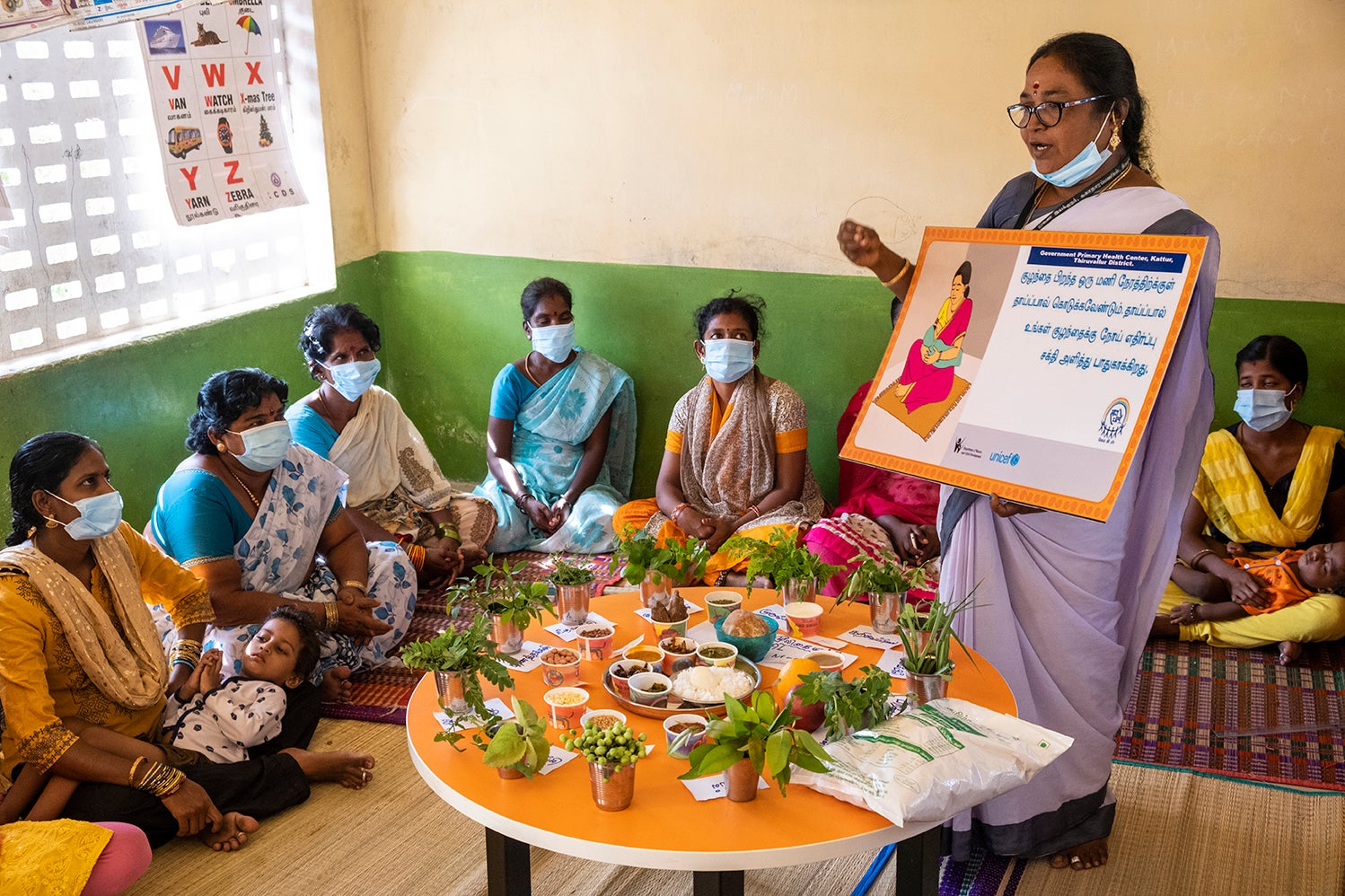India has experienced several demographic, economic, social, and cultural shifts in recent decades, which are described in the national-level report. Here, we describe contextual factors related to maternal and newborn health as they pertain to the lower mortality state cluster.
Community and socioeconomic development
Although community development indicators might be more distally linked to mortality reductions, they nonetheless have undergone notable improvements in recent decades in India’s lower mortality state cluster. Between NFHS 1998–1999 and NFHS 2019–2021, the percentage of households in the lower mortality state cluster with electricity increased from 73% to 99%, the percentage of households with improved toilets rose from 43% to 74%, and the percentage of households with telephones grew from 9% to 94%., Relatedly, households increasingly have bank accounts—crucial considering India’s conditional cash transfer schemes for maternal and newborn health. Between NFHS 2005–2006 and NFHS 2019–2021, the percentage of households in the lower mortality state cluster with a bank account increased from 42% to 95%.,
Nutritional status
India’s lower mortality Exemplar states have seen improvements in some nutritional risk factors for mortality, whereas other nutritional risk factors remain high. Between the 2005–2006 NFHS and 2019–2021 NFHS, in Tamil Nadu the percentage of births to women considered underweight—defined as a body mass index below 18.5—decreased from 29% to 11%., In contrast, maternal anemia remained high and relatively constant at 56% in NFHS 2005–2006 and 53% in NFHS 2019–2021., Maharashtra also experienced a decline in births to underweight mothers over this period, from 42% in NFHS 2005–2006 to 24% in 2019–2021, whereas maternal anemia remained constant at similarly high levels as Tamil Nadu., Maharashtra, in particular, has specifically targeted malnutrition, through the 2005 Rajmata Jijau Mother-Child Health and Nutrition Mission, which has contributed to this progress. Both Exemplar states have implemented village health and nutrition days and village health, sanitation, and nutrition committees that have also been influential in promoting nutrition at the community level.

Women’s empowerment
Progress in women’s empowerment in India cannot be fully captured by one indicator, but together, improved educational attainment, higher age at first marriage, lower fertility rates, and improved autonomy in decision-making highlight that progress has been made. As one government partner described, women’s empowerment was found to be “the cornerstone of everything” that India had achieved in maternal and neonatal health over recent decades.
In the 2005–2006 NFHS, 53.6% of women were reported to have received secondary education and 64.0% were literate. By the 2019–2021 NFHS, these values had respectively increased to 71.8% and 77.2%. The median age at first cohabitation after marriage also increased slightly from 17.9 to 19.1 over the same time span., Women are also increasingly decision-makers about their own health, with the percentage of women reporting that their husband solely decided on their health care declining from 30.7% to 18.3% between the 2005–2006 NFHS and 2019–2021 NFHS., Similarly, the percentage of women who reported that they jointly made health care decisions with their husband increased from 35.1% to 68.3% between the two surveys.,
